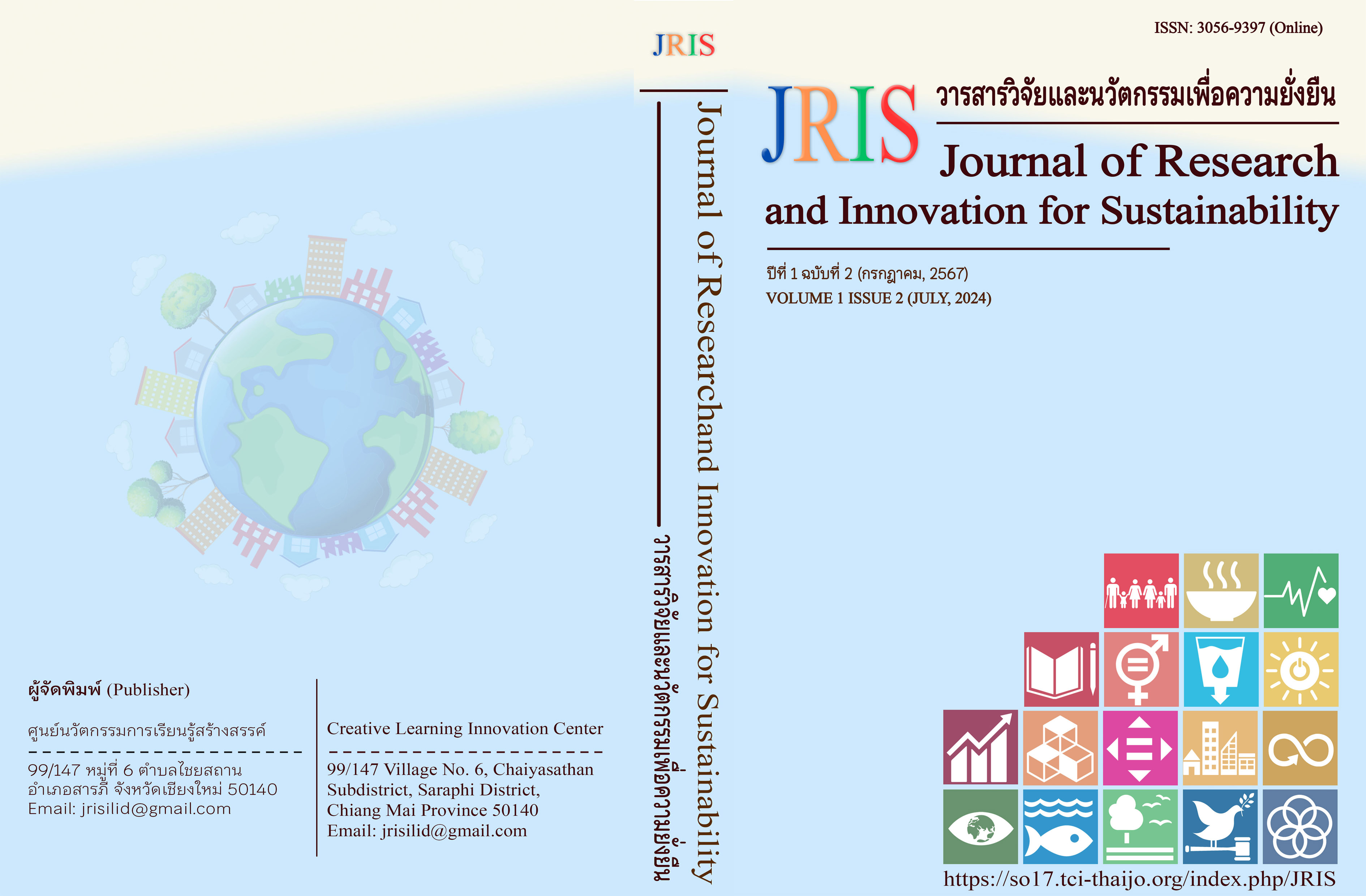THE DEVELOPMENT OF PERFORMANCE INDICATORS FOR SCHOOL ADMINISTRATORS OF WORLD CLASS STANDARD SCHOOL THE SECONDARY EDUCATIONAL SERVICE AREA OFFICE CHAIYAPHUM
Main Article Content
Abstract
The purposes of this research were to: 1) develop performance indicators for school administrators of world-class standard schools in the Secondary Educational Service Area Office Chaiyaphum, and 2) check the consistency of the structural model of performance indicators for these school administrators with empirical data. The sample group consisted of 475 school administrators and teachers in world-class standard schools within the Secondary Educational Service Area Office Chaiyaphum. The sample size was determined using the G*Power 3.1.9.4 program. The research instrument was a questionnaire, and data were analyzed using statistical packages. The questionnaire demonstrated item discrimination power ranging from 0.572 to 0.953. The overall reliability of the questionnaire was 0.986. The findings were as follows:
1) The development of performance indicators for school administrators of world-class standard schools in the Secondary Educational Service Area Office Chaiyaphum was overall at the highest level.
2) The structural model of performance indicators for school administrators of world-class standard schools in the Secondary Educational Service Area Office Chaiyaphum developed by the researcher was consistent with the empirical data.
Article Details

This work is licensed under a Creative Commons Attribution-NonCommercial-NoDerivatives 4.0 International License.
Copyright License
Permission is granted to use text, content, images, or any other material from the publication for anyone who wishes to read, download, copy, distribute, print, search, or link to the full text of the article, compile data for indexing, transfer data to software, or use for any other legal purposes, provided that it is not used for commercial purposes or for business benefit. All articles published in the Journal of Research and Innovation for Sustainability are distributed under a Creative Commons Attribution-NonCommercial-NoDerivatives 4.0 International License: https://creativecommons.org/licenses/by-nc-nd/4.0/
References
จรุณี เก้าเอี้ยน. (2557). เทคนิคการบริหารงานวิชาการในสถานศึกษา กลยุทธ์และแนวทางการปฏิบัติสำหรับผู้บริหารมืออาชีพ. ชานเมืองการพิมพ์.
ชินภัทร ภูมิรัตน์. (2554). โรงเรียนมาตรฐานสากล (World – Class Standard School). http://www.sobkroo.com/img_news/file/A56765439.
นฤมล มิ่งขวัญ, วาโร เพ็งสวัสดิ์, และบุญมี ก่อบุญ (2565). การพัฒนาตัวบ่งชี้สมรรถนะของผู้บริหารโรงเรียน สังกัดสำนักงานเขตพื้นที่การศึกษามัธยมศึกษามุกดาหาร. Journal of Roi Kaensarn Academi, 7(11), 17-38. https://so02.tci-thaijo.org/index.php/JRKSA/article/view/256447
ภัคจิรา ผาทอง. (2563). สมรรถนะผู้บริหารสถานศึกษา สังกัดสำนักงานเขตพื้นที่การศึกษาประถมศึกษาแพร่
เขต 2 [การศึกษาค้นคว้าด้วยตัวเองปริญญามหาบัณฑิต]. มหาวิทยาลัยพะเยา.
รุ่งโรจน์ สงสระบุญ, (2561). แบบจำลองสมการโครงสร้างเพื่อการทำนาย. วารสารมหาวิทยาลัยศิลปากร, 38(1), 185-205.
สมศักดิ์ ฉัตรประยูร. (2564). ความสัมพันธ์ระหว่างสมรรถนะของผู้บริหารสถานศึกษากับทักษะของครูในศตวรรษที่ 21 สังกัดสำนักงานเขตพื้นที่การศึกษาประถมศึกษาพระนครศรีอยุธยา เขต 1 [วิทยานิพนธ์ครุศาสตรมหาบัณฑิต]. มหาวิทยาลัยราชภัฏพระนครศรีอยุธยา.
สำนักงานคณะกรรมการการศึกษาขั้นพื้นฐาน. (2551). แนวทางการดำเนินงานการมีส่วนร่วมการบริหารจัดการศึกษา. ชุมนุมสหกรณ์การเกษตรแห่งประเทศไทย.
สำนักงานคณะกรรมการพัฒนาการเศรษฐกิจและสังคมแห่งชาติ. (2560). แผนพัฒนาเศรษฐกิจและสังคมแห่งชาติ ฉบับที่ 12 (พ.ศ. 2560 - 2564). สำนักงานคณะกรรมการพัฒนาการเศรษฐกิจและสังคมแห่งชาติ.
สำนักงานเลขาธิการคุรุสภา. (2560). แผนการศึกษาแห่งชาติ พ.ศ.2560 - 2579. พริกหวานกราฟฟิค จำกัด.

